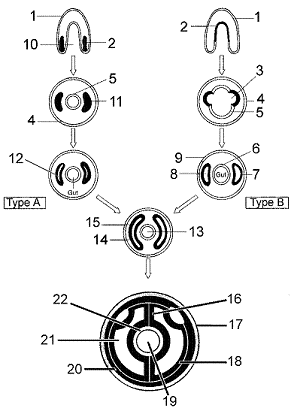A small island has stable populations of plants and animals, including one species of hawk but no other large predators. A ship docks at the island, and the sailors huntand kill most of the hawks. What would you expect as an immediate consequence?
A. an increase in the plants
B. an increase in the insects
C. an increase in the rodents
D. a decrease in the fish
E. a decrease in the plants
Additional:
Clarify Question
· What is the key concept addressed by the question?
Gather Content
· What do you already know about causes of extinction?
Choose Answer
· Given what you now know, what information and/or problem solving approach is most likely to produce the correct answer?
Reflect on Process
· Did your problem-solving process lead you to the correct answer? If not, where did the process break down or lead you astray? How can you revise your approach to produce a more desirable result?
C. an increase in the rodents
Additional:
Clarify Question
· What is the key concept addressed by the question?
o This question addresses causes of extinction.
· What type of thinking is required?
o This question is asking you to analyze the information given, using logic, to dissect the problem and determine the answer.
Gather Content
· What do you already know about causes of extinction?
o A variety of causes are responsible for extinctions. Habitat loss is the major problem for most animals today. Introduced species and over exploitation are two more major causes.
o Many other factors contribute to species extinctions as well, including disruption of ecosystem interactions, pollution, loss of genetic variation, and catastrophic disturbances, either natural or human-caused.
o More than one of these factors may affect a species. In fact, a chain reaction is possible in which the action of one factor predisposes a species to be more severely affected by another factor.
Choose Answer
· Given what you now know, what information and/or problem solving approach is most likely to produce the correct answer?
o Most hawk species feed on rodents. A reduction in the hawk population will lead to at least a temporary increase in the rodent population.
Reflect on Process
· Did your problem-solving process lead you to the correct answer? If not, where did the process break down or lead you astray? How can you revise your approach to produce a more desirable result?
o The question required you to analyze the information given, using logic, to dissect the problem and determine the answer.
o Did you recognize that population changes in a predator can affect other species in the food chain?
You might also like to view...
Color blindness is an X-linked recessive gene. Two normal-vision parents produce a color-blind child
(a) Is this child male or female? (b) What are the genotypes of the parents? (c) What are the chances that their next child will be a color-blind daughter? What will be an ideal response?
Refer to Figure 30-1. The development pattern labeled Type B is characteristic of:

a. arthropods.
b. platyhelminths.
c. cnidarians.
d. echinoderms.
e. annelids
Bacteria and archaea share which of the following characteristics?
A. They are both prokaryotic cell types. B. They are both sensitive to antibiotics. C. They both have peptidoglycan cell walls. D. They both have histones.
Why do some people not drink beverages with caffeine right before bedtime?
A. It increases the flow of urine and causes you to go to the bathroom during the night. B. It can cause a headache if consumed late at night. C. It decreases the flow of urine and can cause kidney stones. D. It may affect the ability to sleep, but caffeine has very little effect on the urinary system. E. It can lead to diarrhea.